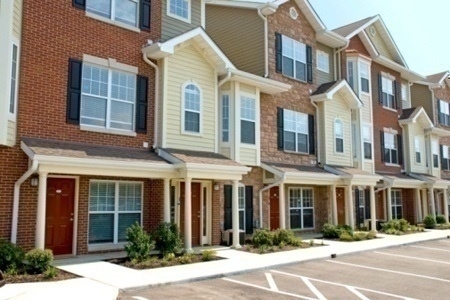 The Multifamily Production Index (MPI), released recently by the National Association of Home Builders (NAHB), reached 54 in the third quarter, seven points lower than a spike in the second quarter but the seventh consecutive reading above 50.
The Multifamily Production Index (MPI), released recently by the National Association of Home Builders (NAHB), reached 54 in the third quarter, seven points lower than a spike in the second quarter but the seventh consecutive reading above 50.
The MPI measures builder and developer sentiment about current conditions in the apartment and condominium market on a scale of 0 to 100. The index and all of its components are scaled so that any number over 50 indicates that more respondents report conditions are improving than report conditions are getting worse.
The MPI provides a composite measure of three key elements of the multifamily housing market: construction of low-rent units, market-rate rental units and “for-sale” units, or condominiums. Although all three components fell from 2013 peaks in the second quarter, all remain above 50. The MPI component tracking builder and developer perceptions of market-rate rental properties dipped three points to 64, remaining above 50 for 12 straight quarters; while the components for low-rent and for-sale units declined from highs in the second quarter, both settled at 50.
“Multifamily developers remain positive about where the market is right now, despite the dip in the index,” says W. Dean Henry, CEO of Legacy Partners Residential in Foster City, Calif., and chairman of NAHB’s Multifamily Leadership Board. “There are challenges still facing the industry such as availability of labor and rising cost of some building materials, but the demand for apartments and condos is strong enough for developers to proceed in most markets.”
The Multifamily Vacancy Index (MVI), which measures the multifamily housing industry’s perception of vacancies, dropped two points to 40, with lower numbers indicating fewer vacancies. After peaking at 70 in the second quarter of 2009, the MVI improved consistently through 2010 and has been fairly stable since 2011.
“The multifamily industry has recovered significantly from its trough in 2009 and is getting close to reaching equilibrium,” says NAHB Chief Economist David Crowe. “NAHB’s forecast calls for continued improvement through 2015, but at a decreasing rate.”
Historically, the MPI and MVI have performed well as leading indicators of U.S. Census figures for multifamily starts and vacancy rates, providing information on likely movement in the Census figures one to three quarters in advance.
For data tables on the MPI and MVI, visit www.nahb.org/mms.










